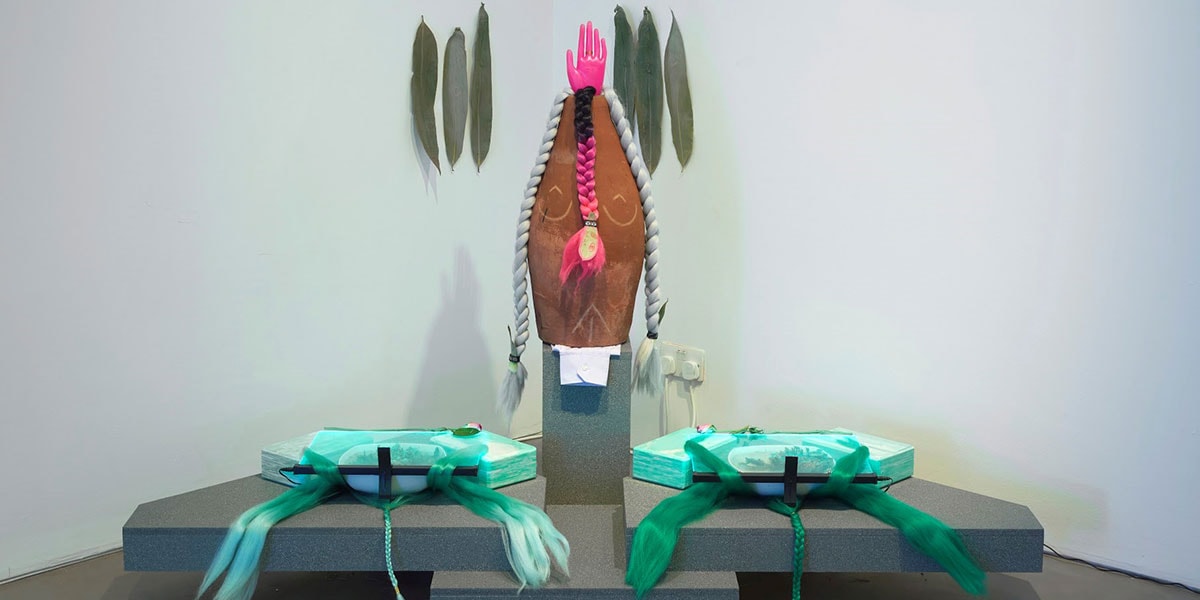Tyler Woolcott is the Director of StudioVisit, an online studio visit platform that provides artists the opportunity to advance their work and network through this innovative concept. We had the opportunity to speak to Tyler about his new business venture and discuss our upcoming course, Virtual Studio Visits: Performing Identity Using New Media, where he will be teaching this exciting new program in October. Tyler also shares his experience of working in the pandemic and his views on how it has affected the art world.
Q. In the last six months with a move to virtual and digital meetings and events we seem to have broken down so many physical walls and doors - we've had access to people's homes and spaces - How has this impacted on your world - Has it been opened up to a greater extent?
It’s been amazing to virtually meet with and experience a wide array of artist’s studios from around the globe. Without the expectation of needing to travel to meet in-person or of a predetermined outcome, and also the pause in exhibitions and production to a large extent, it’s freed up a productive space for the artists and I to collaborate on a continuing basis, humanised by the fact of being in our home/studio, and for us to be more experimental in our thinking about what a studio visit can be; seeing the constraints as an opportunity.
Q. It's certainly been an odd time for all of us and the Art World has been considerably affected - How do you think artists are coping during these circumstances - has it been an inspiration for work or do you think it has blocked creativity?
Many of the artists I’m collaborating with are very busy plotting and planning ideas for new projects and workarounds for existing ones. Lindsey Mendick has been prolifically making new ceramics, such as her new “cinch pot” sculptures, Andy Holden has transformed his “Structure of Feeling” exhibition into a ghost train ride complete with painted fibreglass clad mobility scooters, Becky Beasley has been renovating her home studio in St Leonards-on-Sea, Eric Baudelaire and Adham Faramawy have been planning their new film works for when the lockdown is lifted, and Athena Papadopoulos moved to Hull from London in order to work in solitude to create her fantastical sculptures.
Q. How do you see the art scene changing as a result of the pandemic?
More home-based studios/working, more virtual exhibition installations, more art fair viewing rooms, more virtual studio visits, overall it’s going to be a more blended virtual/in-person model to what existed before.
Q. In this time when every day seems to bring change - what have you discovered about yourself that has kept you positive and forging ahead?
Staying connected with family and friends and exploring creative ways for participating StudioVisit artists to host studio visits with a variety of excellent educational and art world organisations.
Q. During the course you are presenting with Christie's Education - Performing Identity Using New Media -you will be providing access to some amazing emerging artists' studios - Tell us how you made contact with them and what makes them artist to watch.
As a curator and writer, I’ve collaborated on exhibitions, publications, talks, performances, and projects with several of the participating artists. Other artists I’ve been closely following or have had ongoing dialogues with. All of them are deeply passionate about their work and are incredible thinkers. They’re artists to watch because they are uniquely intelligent, ambitious, articulate about their practice, and their work is being recognised and shown by the right institutions, curators, collectors, galleries, and writers. On my course, students will be getting insights from the source, the artists, rather than second hand. The best artists have a firm grasp of art history, issues in the gallery/art world/institutional models, exhibition design, creative insights, ideas on collecting, production, leveraging their ideas, and more. The artists were specifically selected for this course for their timely investigations into forgotten queer histories, intersections of the body and technology, legacies of colonialism, healing practices and the corporatisation of wellbeing, and allegories of absence and removal evoking issues of migration. It will also offer a great chance to sometimes see works that no one has seen before!
Q. You have just been included in Artnet's Intelligence Report as one of '51 Trailblazing power players' in the art world. What does that mean to you? How is what you do transforming how the art world will look in the future?
I’m thrilled and honoured to be included and so excited for all of the participating artists. StudioVisit is about giving the artists the tools to become an independent institution. It’s very flexible and made to fit within their busy schedule. They can, for example, host a studio visit as part of a new exhibition, see who is booking and grow their professional network of supporters and collectors, and to get paid for studio visits. We’re also in the process of teaming up with educational and arts institutions to broaden their audiences. It’s been most exciting seeing how the artists are interpreting what a studio visit can be, such as fundraising by offering limited editions included as part of the visit, or mentoring sessions. The course at Christie’s is going to be the culmination of my research and I’m so excited to share it and the amazing artists with Christie’s students!
Find out more about Virtual Studio Visits: Performing Identity Using New Media taking place on 14 October - 18 November.
Image: Patricia Domínguez, Green Irises, 2019. Installation view. Commissioned by Gasworks. Courtesy of the artist. Photo Andy Keate.

